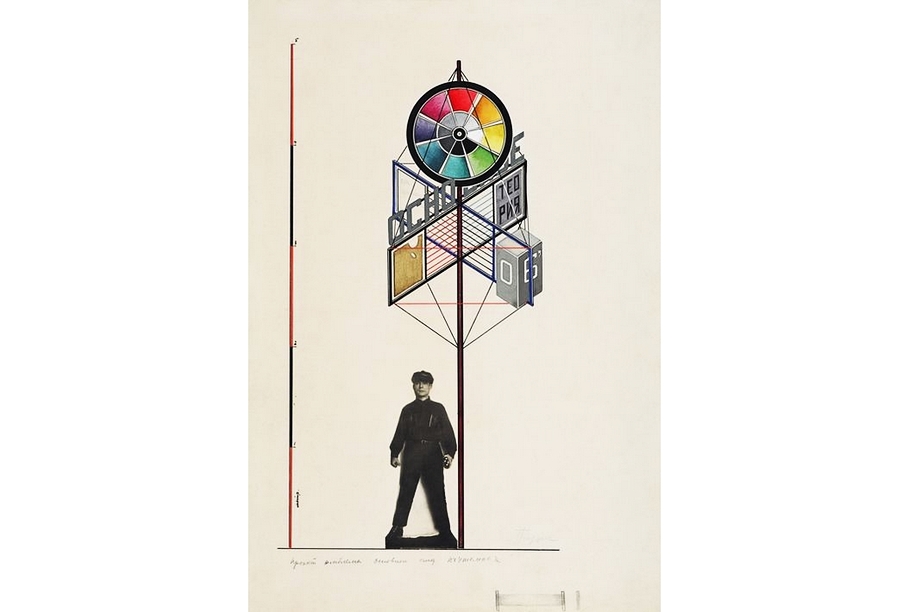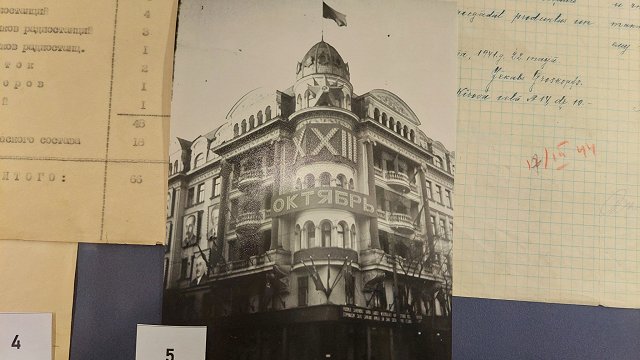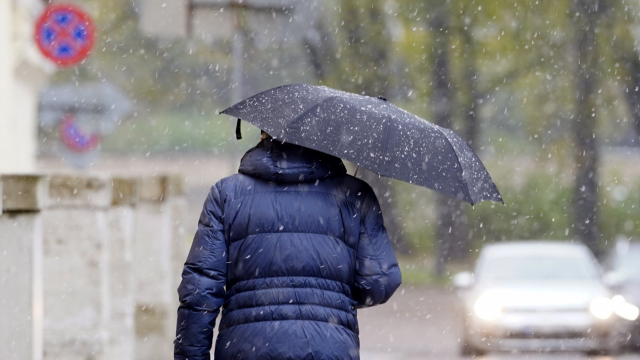The exhibit is divided into eight sections so viewers can follow the artist’s evolution in his thinking and seeking of new forms of expression and new technologies in various art forms.
The works of Gustavs Klucis (1895-1938) are well-known in European museums, but the world-famous constructivist’s links with Latvia often go unmentioned. However it is up to Riga, as the European Cultural Capital in 2014, to tell the full story about Latvians who have contributed key aspects to European culture.
“It’s the color field, the photograph, the text. Then with the help of the photograph and color the textual message is enhanced. And he works especially with scale. That’s Klucis’ main contribution to the poster-art of the time,” says exhibit curator Iveta Derkusova.
The title of the exhibition reflects Gustavs Klucis’ belief that every artist has the right to experiment, as Klucis wrote in the mid-1930s when the artist had to defend himself from incessant accusations of being a formalist and having to prove that his creative work was in line with the dogma of Socialist Realism.
But right after the 1917 Bolshevik coup (the October Revolution), which subjected Russian society to an enormous social experiment, the young artist was under the illusion that this new society would provide fertile ground for his artistic development and creative experiments.
An experiment entails not only daring – it also entails risk. Gustavs Klucis had the courage to follow the path in art that attracted him, believing that his creative and civic-minded goals were compatible with the state in which he lived and created, and with the aims of its society. Today we are privileged to be able to look back over time and assess the historical events of the 20th century which caused the experimental art of the Constructivists to be transformed into an ideological tool of Soviet power.
Finding himself at the epicentre of these events, Gustavs Klucis unfortunately failed to predict the dangers that the new authorities’ cultural policies posed to society and his own freedom of creativity and expression, and paid the highest price – his very life, perishing in Stalin’s Great Terror along with thousands of other Latvians living in Russia at the time.
In the almost 20 years of creative life Gustavs Klucis spent in Moscow, his art went through the full cycle of manipulation by the totalitarian state: from illusory creative freedom to involvement in the building of the new state and official recognition, followed by censor-dictated praise to the new totalitarian regime and, finally, the state’s clampdown on the avant-garde.
Because of this, in the evaluation of Klucis’ artistic legacy it is impossible to avoid discussing the artist’s relationship with the Soviet authorities, the freedom of personal choice, and social accountability. However, it is more important to understand his art as a unified whole rather than draw a line between the “right” and “wrong” Gustavs Klucis; the artist’s body of work is marked by qualities that have survived the test of time and place him among the most outstanding artistic figures of the 20th century.
Gustavs Klucis’ collection at the Latvian National Museum of Art was established in 1959 after an exhibition of works by Latvian Red Rifleman artists was organized in the State Museum of Latvian and Russian Art (today – the Latvian National Museum of Art). During the exhibition works by Gustavs Klucis, Aleksandrs Drēviņš and other artists who had lived in Moscow between two world wars were on view for the first time in almost twenty years period, when the names of these artists murdered by the Stalinist regime had been literally erased from the annals of art history. After the close of the exhibition Gustavs Klucis’ widow Valentina Kulagina (1902-1987) donated a significant number of the artist’s works to the museum: photomontages, drawings and design projects from the Constructivist period, posters, examples of book design and watercolours, as well as photographs and a unique sketch album.
The exhibition “Gustavs Klucis. Anatomy of an Experiment” is currently the most comprehensive artist’s retrospective in his native land. On view along with the Latvian National Museum of Art collection are artworks and documental photographs from number of museums’ and private collections: George Costakis (1913-1990) collection at the State Museum of Contemporary Art in Thessaloniki, State Tretyakov Gallery and State V. Mayakovsky Museum in Moscow, Latvian War Museum, Gustavs Klucis’ family archive, Cajasol Obra Social and VIMCORSA Viviendas Municipales collections in Spain, private collections in Latvia – art collection of Dr. Guntis Belēvičs and Mūkusala Art Salon collection. Videos presented at the exhibition include materials from the Russian State Documentary Film and Photo Archive, and Latvian State Archive of Audiovisual Documents.
The exhibition’s message to the audience is to avoid any temptation to denounce or deny the artist’s work. By telling the story of a single individual, the exhibition will encourage visitors to think about problems and phenomena that that have always been of great importance – the limits and responsibilities of an individual’s freedom of choice, the relationship between an artist and a regime, and how the artist and his artworks influence public opinion.
Gustavs Klucis himself referred to his work as “laboratory” research, during which he attempted to solve specific tasks. Formal problems (texture, space, colour, dynamics, etc.), which engaged the artist’s attention in the early 1920s, evolved into the task of channelling to the viewer in convincing manner the message conveyed by the artwork. Gustavs Klucis saw modern technology (photography, cinema, radio) as having the potential for synthesizing new art forms and tearing down the barriers between visual art, design, and architecture.































